Introduction: From the tarmac to the cold road
In December 2020, in the middle of strict COVID restrictions, we bought a used 2018 Nissan Leaf – a 40 kWh version that would soon be put to the test. With previous experience from driving Leafs long-distance, we knew what we were getting into. Or so we thought.
Retrieving a car during a pandemic required some extra planning. We flew to Gardermoen with only carry-on luggage, wearing masks and keeping our distance. Thankfully, a colleague had picked up the car from the dealership and parked it at the airport, so we could practically walk from the plane directly into the car – no human contact required.
After a quick glance at the remaining range and a silent wish for mild weather, we were ready for a long, cold journey north. We knew it would be a challenge – darkness, cold, and a battery that doesn’t exactly thrive below zero – but it was also going to be an adventure.

Preparations: Minimal baggage – maximum planning
Flying with only carry-on meant we had to keep gear to a minimum. Warm clothes, snacks, and a good dose of patience were the essentials. Fortunately, the dealership had confirmed that the car came with a type 2 charging cable, and that it would be fully charged and ready upon pickup.
That last part didn’t quite work out.
Still, the plan was in place: follow the E6 through Gudbrandsdalen, with the first overnight stop at Dombås Hotel. The second overnight stay would be in Mo i Rana, further up north. In total, the trip would require 13 charging stops from start to finish. It quickly became clear that the Nissan Leaf is not a long-distance winter warrior – but with a well-thought-out plan, the journey was still very much possible.
Stage 1: A plan in minus – and a new plan in place
The dealer's slip and a helpful colleague
Even before we sat behind the wheel, the challenges began. The dealer, Birger N. Haug, had promised that the car would be fully charged upon pickup. It was not. When my colleague picked up the car and drove it to Gardermoen, he discovered that it was only charged to around 50% – just enough to get there, but not much more.
Luckily, he owned an almost identical Leaf himself and had the cable and experience to make the best of the situation. He took the car home and let it charge while he had dinner – a gesture I'm incredibly grateful for. It gave us a little extra power, but certainly not enough to follow the original plan and drive to our first planned fast charger.
Rerouting – and nerve-wracking range
So – even before departure, we had to rewrite our route and expectations.
With the calculator and apps open, I calculated that we could barely make it to Innlandsporten, a junction between Minnesund and Mjøsa – a place with both fast charging and food. A sort of first rescue.
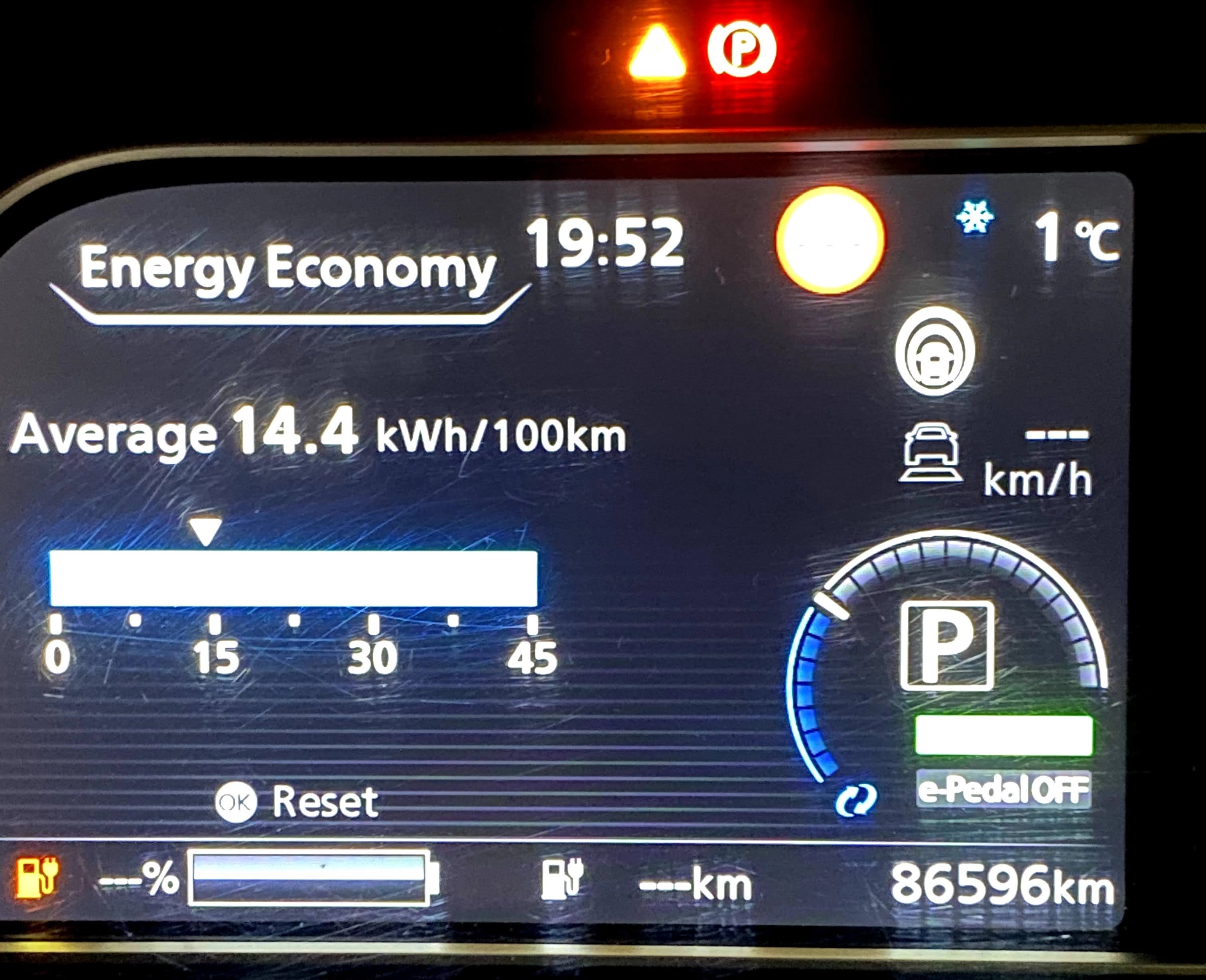
We rolled into the charger at Innlandsporten with the battery almost at zero. The car could just as well have entered turtle mode or stopped entirely – we were only a few kilometers away from calling for roadside assistance on our very first charging stop.
We charged for 41 minutes before we had enough power to continue.
Rest, food, and more electrons
The next stop was Burger King in Lillehammer, which provided a quick dinner and another dose of electricity – we stayed here for 27 minutes before rolling on.
The third and final stop of the evening was Vinstra, where the car was connected for another 41 minutes. Although things were improving with range now that we had some control, it became clear how time-consuming and demanding winter driving in a Leaf can be. Cold batteries, high consumption, and frequent stops were far from ideal – but it worked.
Charging hunt at Dombås - Winter Road Trip
Upon arrival in Dombås, we hoped to charge overnight at the hotel’s "charger" – which in practice was a regular wall socket. That could have worked just fine. We would have nearly fully charged overnight.
If it hadn’t been for one thing: the sockets were placed near the entrance, on the most attractive parking spots. And – of course – all were taken. No available outlet for us.
Plan B: Overnight charging at BKK
Plan B was put into action: I checked into the hotel and got my daughter to bed. Then I drove the car across the street to BKK’s chargers, where at least we could slow-charge overnight. Not ideal, but it worked – and we got enough power to move on the next day.
Stage 2: Dombås – Mo i Rana
The longest day of winter
A good start: Fully charged and warm at altitude
After a quiet night and slow charging at BKK, the Leaf was ready for the next long leg. What really gave us a flying start this day wasn’t just the full battery, but also that it was preheated – and already on top of a mountain. With the battery already warm and the car toasty inside, we could save both energy and time.
Dombås is strategically located – and actually an excellent charging spot. No matter which way you're going, it's downhill after charging. That’s a luxury in the EV world, especially when every kilometer counts. Bonus: the food at Frich’s next to the chargers is both nutritious and surprisingly good – something that helps boost morale too.
The trip's longest stretch – and it went surprisingly well
The day’s first and longest stretch was from Dombås to Circle K Nidarvoll in Trondheim – a whole 198 kilometers. It became the longest leg of the trip on a single charge, and perhaps also the most impressive. Thanks to preheating, a full battery, and lots of downhill driving, we got far better range than we had dared hope for.

Pizza and charging in Steinkjer
The next charging stop was at Circle K Sannan in Steinkjer, where we were plugged in for 71 minutes while we enjoyed pizza at a nearby restaurant. This was a much-needed break – for both body and car. It’s amazing how much a warm meal does for morale during a long winter drive.
Northbound to Namsskogan
Charge number four was at Namsskogan Hotel, where we stopped for 47 minutes. This was an efficient break – a quiet place, no queue, and perfect for stretching our legs before the next leg. But it takes too much time during a winter road trip
Almost closed – but we made it
The next stop was Mosjøen, and things nearly went wrong here. We just barely managed to use the toilet at the charging station before it closed – thankfully, we were let in, and we were incredibly grateful. Small details like that mean everything after hours on the road.
Arrival in Mo i Rana – 01:00
We rolled into Mo i Rana a little after 1 a.m. The plan was to charge overnight at the hotel, but – as in Dombås – the hotel charger was taken. (The Home Hotel Helma has now (2025) upgraded the chargers, an absolute plus)
So it was time to improvise again. I parked the car at a slow charger at Circle K, and walked back to the hotel in the cold, clear night air. It was a refreshing walk, but we left the fast chargers free for others and hoped that we’d get enough charge overnight.
Stage 3: Mo i Rana – Harstad
Breakfast, mountains, and a flat battery
A proper start to the final day
After a long travel day, this one started with a rare treat: a good breakfast. Clarion Collection Hotel Helma delivered both good food and good vibes – and most importantly: the car was fully charged. I could start the heating via the app, and that gave us a comfortable start to the final leg.
Over Saltfjellet in a frozen landscape
It was a beautiful drive over Saltfjellet, with clear, cold winter weather and little traffic. The Leaf cruised quietly through the white landscape, and the battery lasted well until the first charging stop after 136 kilometers.
We stopped at Circle K Røkland, where we charged for 21 minutes – just enough to stay on schedule.
Charging when you can, not just when you must
Next stop was Fauske, at Shell. We didn’t actually need to charge, but had another errand that was very necessary – so we charged when we could, not just when we had to. Classic EV mentality.
Racing the ferry at Innhavet
Next charging stop was Innhavet, but here time got the better of us. We had the ferry in our sights, and to catch it, we had to cut the charging session short. So we left with less than ideal battery level and crossed our fingers.
Turtle mode in Harstad
After the ferry, we entered the final stretch – from Lødingen to Harstad. I had done the math and figured it would work out – barely.
It didn’t.
As we approached the top of Harstadåstunnelen, with only 7 kilometers to go, the dreaded turtle icon appeared. I maneuvered the car downhill toward the city and hoped to gain a few kilometers through regenerative braking. But then the car blacked out at the top, and even regen was disabled.
That was it. Game over.
The last meters by tow truck
So – after over 1,300 kilometers in a small EV through the Norwegian winter – it was a tow truck that got us those final meters. Thankfully, I was able to pick up my youngest daughter first, before getting towed to the nearest fast charger.
And with that, the journey ended.
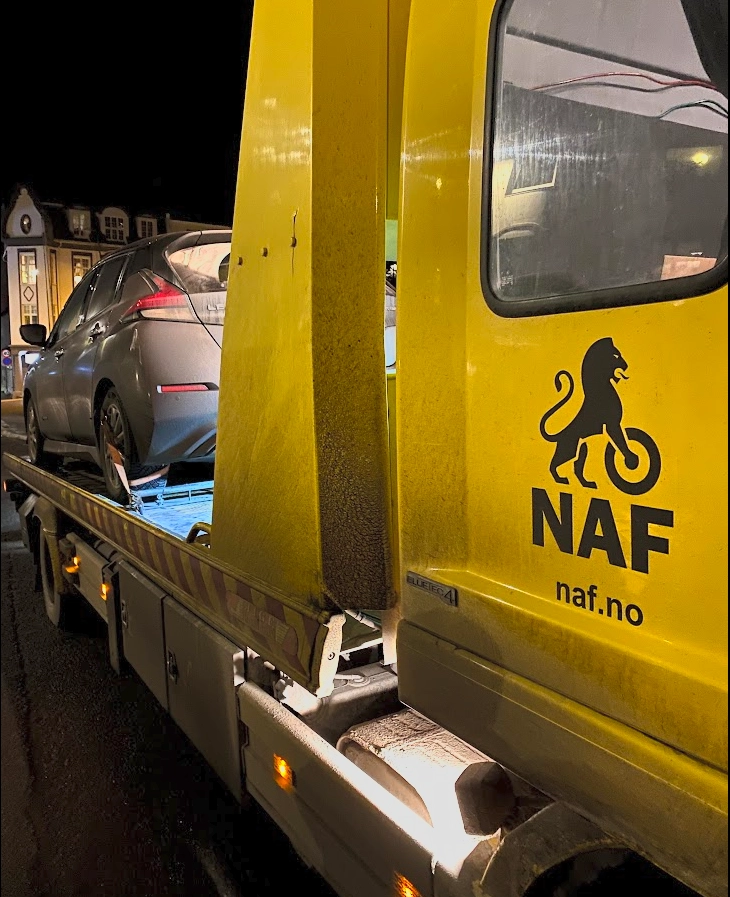
Conclusion: It almost worked
Driving from Gardermoen to Harstad in December, in a Nissan Leaf with a 40 kWh battery, is not the easiest thing to do. It requires planning, flexibility, patience, and a good dose of curiosity. But it’s doable.
We had cold batteries, occupied chargers, time pressure – and in the end, a flat battery just 7 kilometers from home. Still, I’m left with a sense of accomplishment. Not only did we almost make it – we learned a lot along the way.
Is the Leaf a winter road trip car? No, not really. But with realistic expectations and a sense of adventure, it’s possible. And actually, kind of fun.
Translations: Norsk
.png)
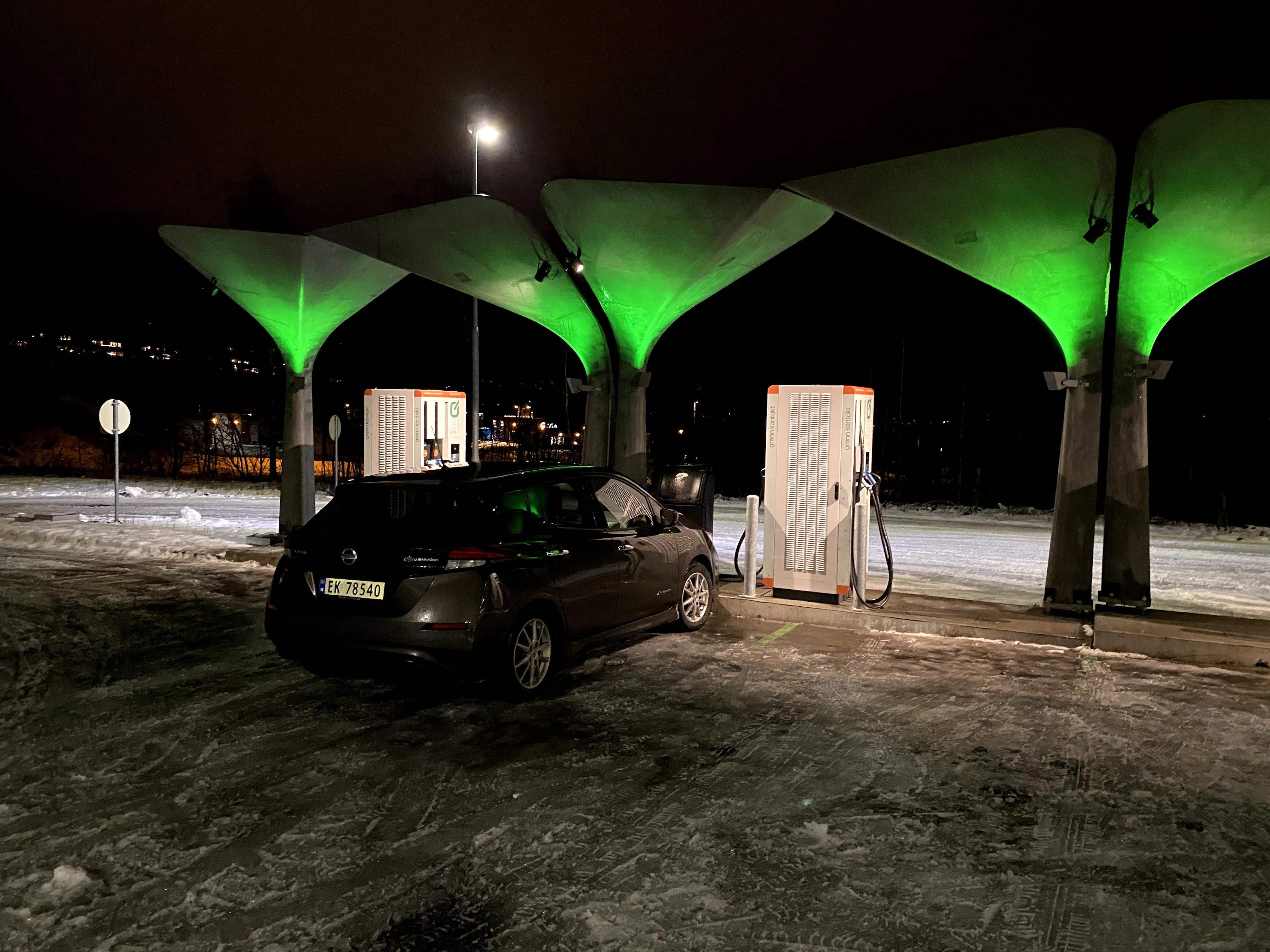

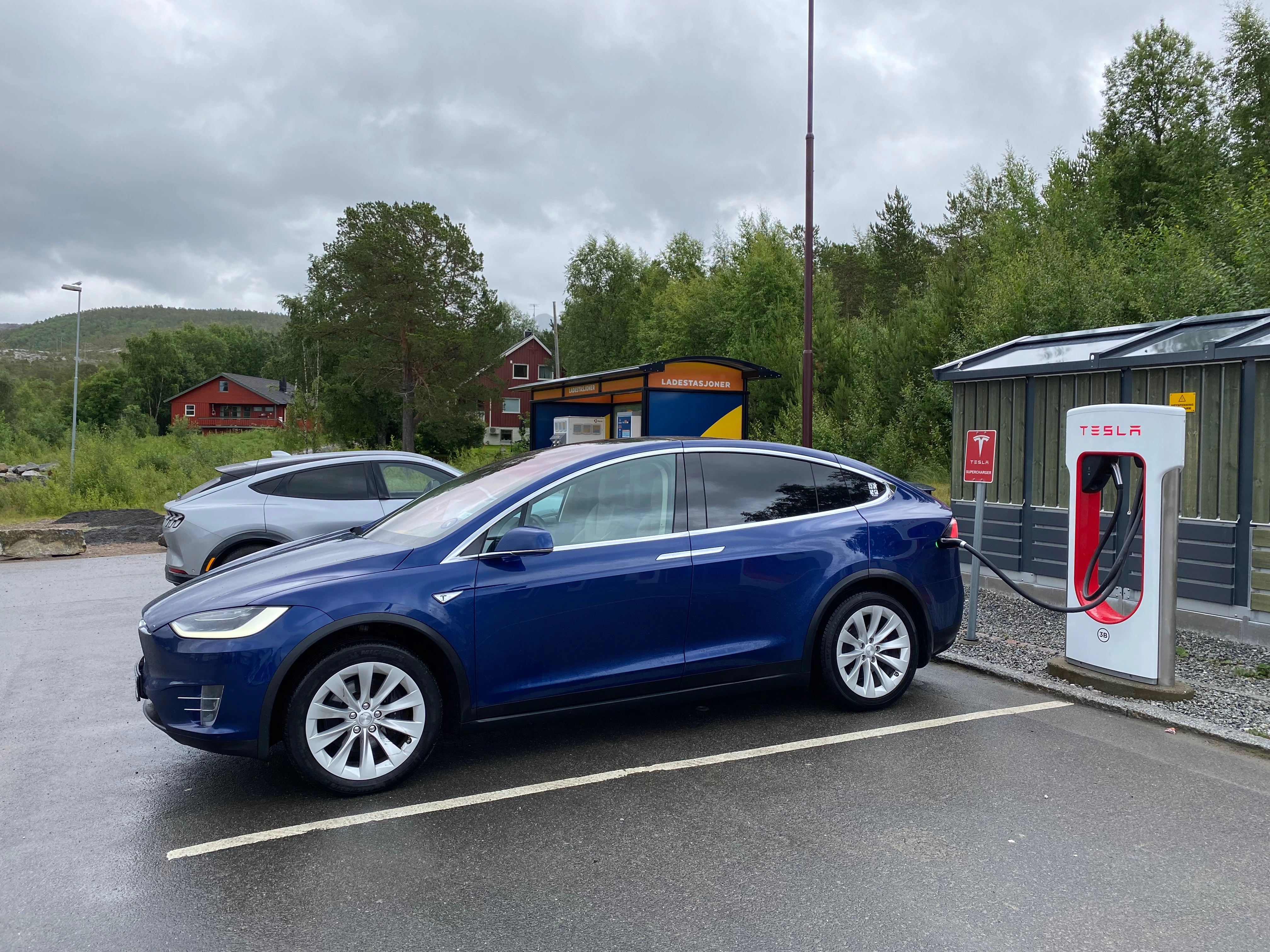
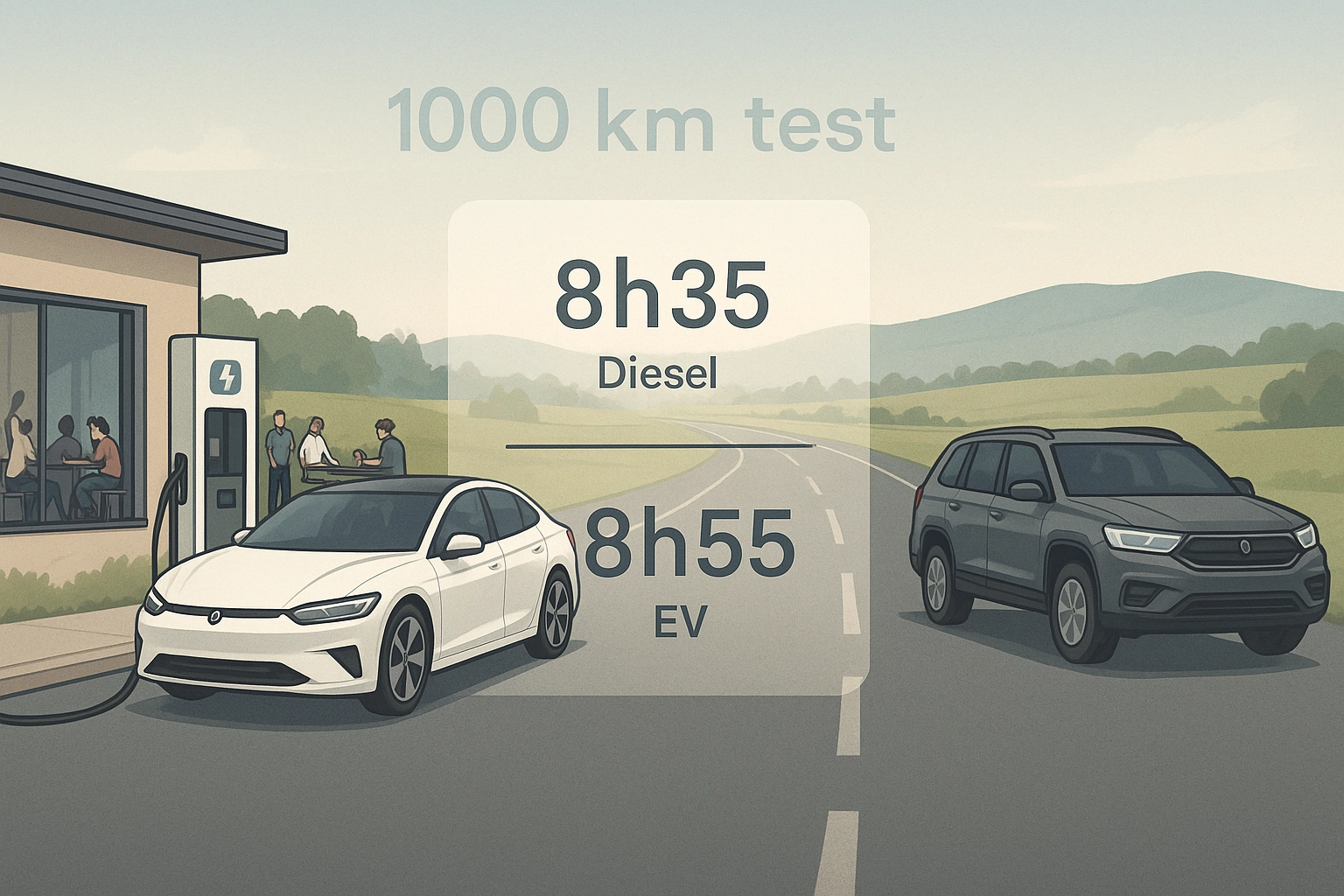
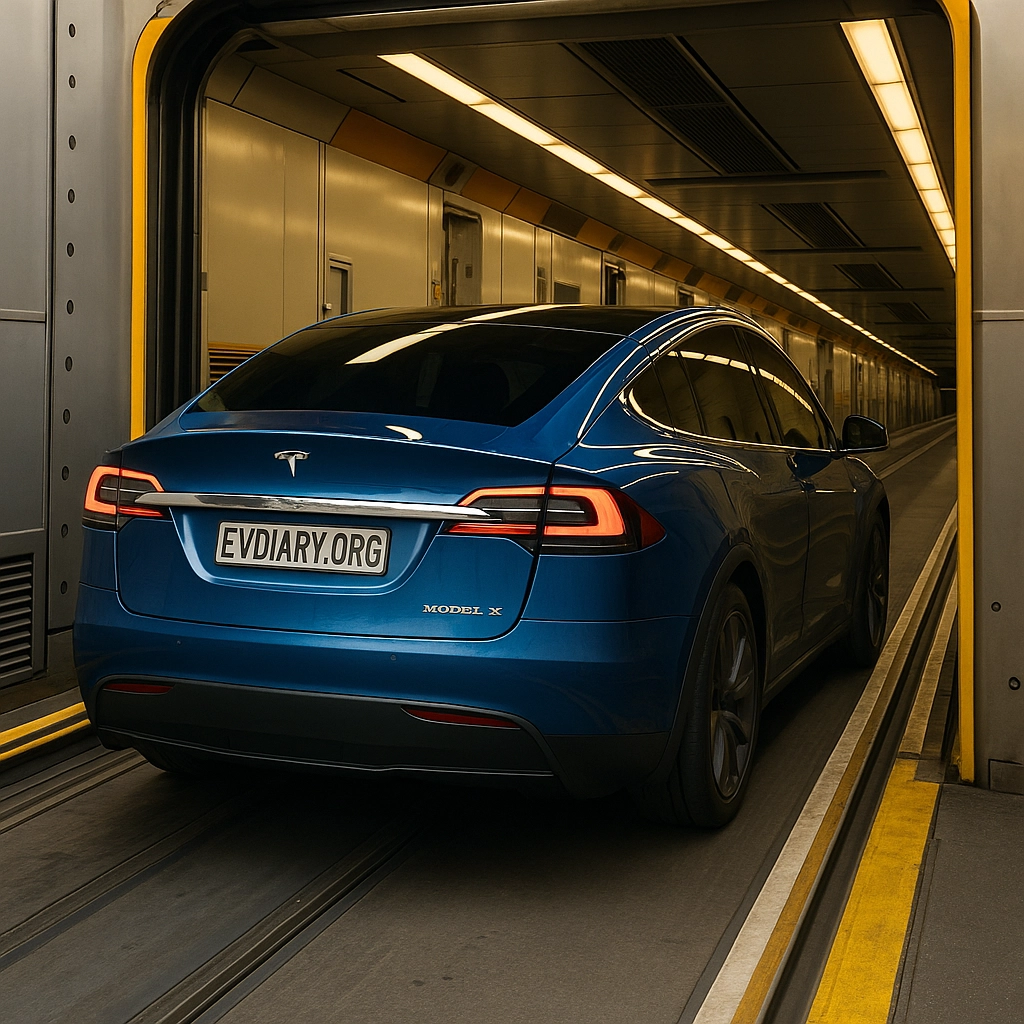
Comments